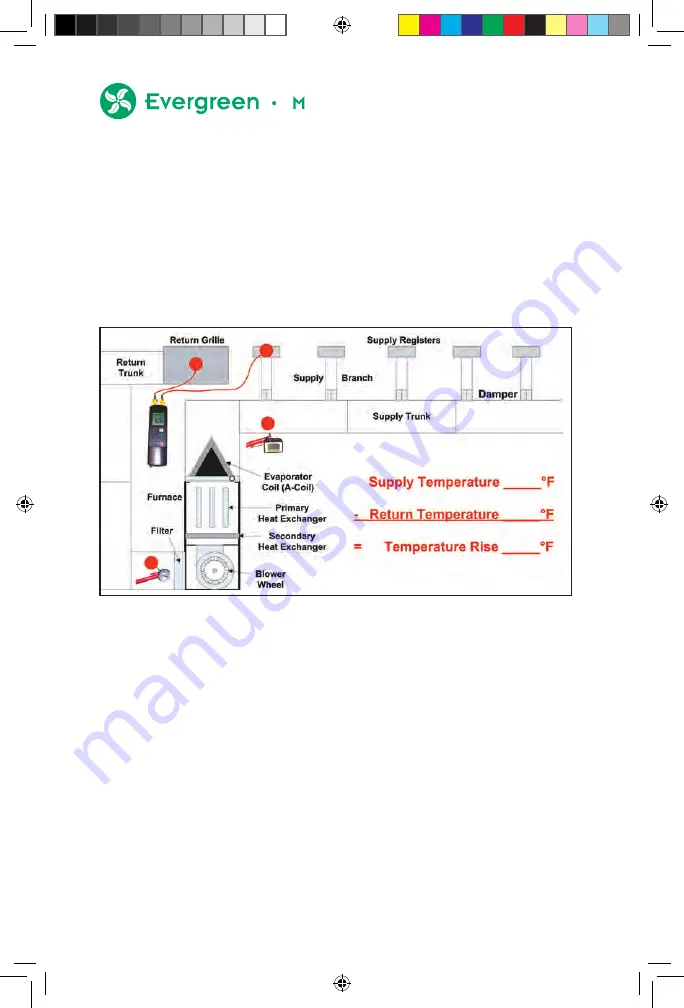
- 20 -
Airflow Tests
(CoN’tD)
measuring temperature Rise
Temperature rise should be measured as close as possible to the HVAC
system in the return air inlet and in the supply out of the line of site of the heat
exchanger. The diagram below shows an example of an up flow system and
the recommended measuring points. Down flow (counter flow) and horizontal
flow systems follow the same parameters.
If access to the ductwork close to the furnace is not possible, use the closest
return grille and supply register. Analog or digital thermometers are accurate
enough for these readings. Some dual temperature meters will automatically
calculate the difference.
Temperature rise is calculated as the difference between the supply and return
temperature readings.
• Increase blower speed to lower the temperature rise.
• Decrease the blower speed to increase the temperature rise.
Example:
If the manufacturer’s data plate rating is for a 30 – 60 degrees Fahrenheit
temperature rise, and the actual measured rise is 65 degrees, the blower
speed will need to be increased. If the actual measured rise is 25 degrees, the
blower speed will need to be decreased.
®
I
Evergreen IM manual 01-13.indd 20
2/13/13 11:12 AM
















































